Visited: April 6, 2025
This spring, I finally walked through the Sakura Tunnel at the Osaka Mint Bureau—
a tradition that has continued since 1883, yet somehow had always remained out of reach, despite living in Kansai.
Perhaps it was the fear of crowds, or perhaps I had always placed others before myself.
But now, with my children grown and flown, I felt light enough to go alone.
What I found there was not just a path lined with blossoms—
but two springs.
One, the earthly spring: drunk on sake, filled with laughter, light, and noise.
The other, a celestial spring: drunk on cherry blossoms, where the soul quiets and is gently washed clean.
That contrast remains etched deep within me.

A backdoor beginning—
slipping into the springtime bustle, just in time.
Without doing much research, I arrived just in time for my reserved slot—only to be surprised when I was guided not through the main gate, but through a back entrance along the riverside.
That alone felt like a small adventure.
The riverside trail from Temmabashi to Sakuranomiya was packed with hanami-goers and lined with food stalls, making every step feel slow and heavy as the minutes slipped away.
In the end, I made it in by the skin of my teeth—
as if the cherry blossoms themselves were hurrying me along.

The Buzz Below: Stalls, Sake, and Springtime Stirring
Along the riverside, food stalls stood in a row, filling the air with the savory scent of takoyaki and the rising steam of yakisoba.
Cans of beer in hand, laughter on their lips—
everywhere, voices called out “Kanpai!” in celebration, as if spring itself were throwing a festival.
It was the very picture of the “world below.”
A scene of people delighting in each other, intoxicated by the season, by sake, and by joy itself.
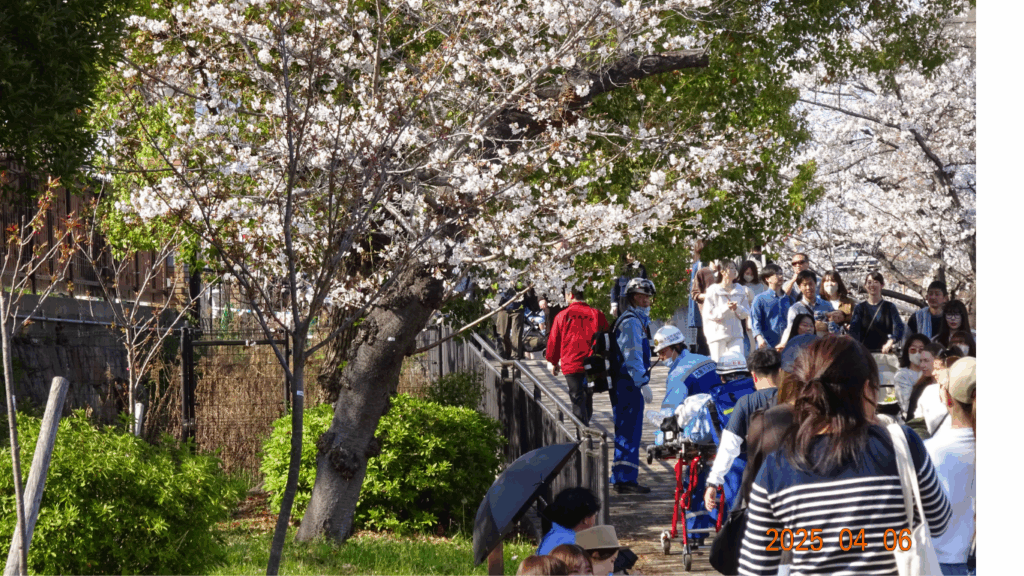
A Stretcher Through the Crowd: A Shadow of Reality
In the midst of all that bustle, a team of emergency responders suddenly appeared, carrying a stretcher.
For a brief moment, the crowd fell silent.
Perhaps someone had simply drunk too much, or maybe they had fallen ill—
it was over in an instant, but to me, it felt like a quiet warning: know your limits.
Even beneath the brightness of spring, the shadow of reality lingers.

Crossing the Threshold: Beyond the Mint Gate Lies Heaven
Leaving behind the riverside commotion, I finally reached the gate of the Mint Bureau.
The moment I stepped through it, I felt as if I had entered another world.
A modest sign quietly reminded visitors that food and drink were not allowed,
and everyone around me seemed to instinctively lower their voices.
The space—enveloped in a tunnel of cherry blossoms—felt like a heavenly realm.
Only the scent of flowers, the hush of silence, drifting petals, and soft light remained.
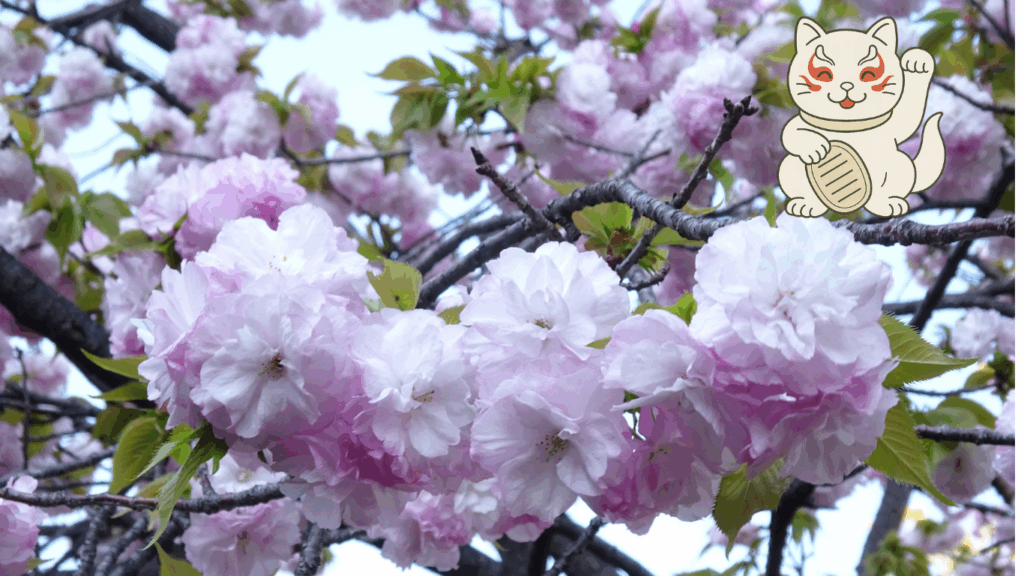
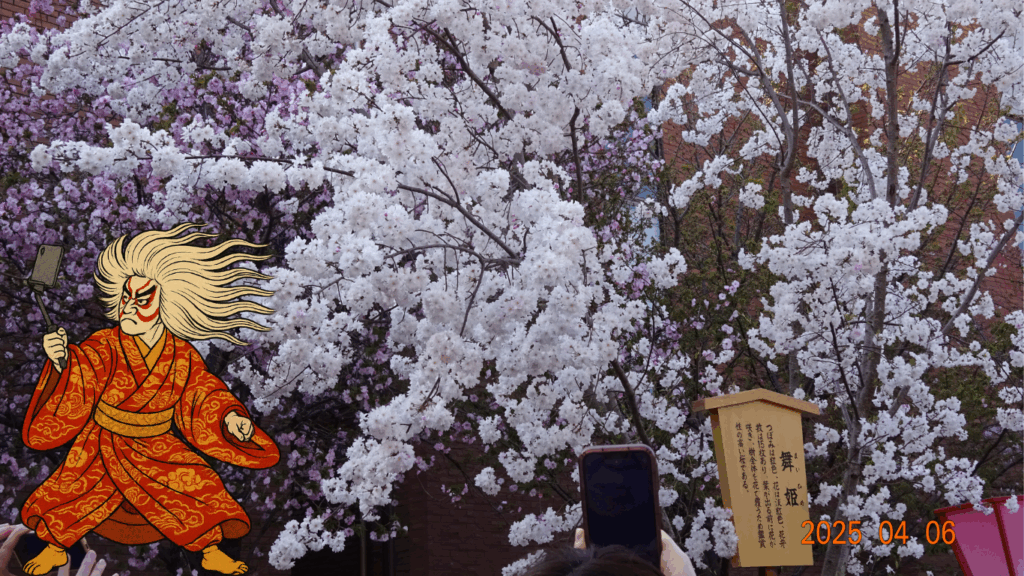
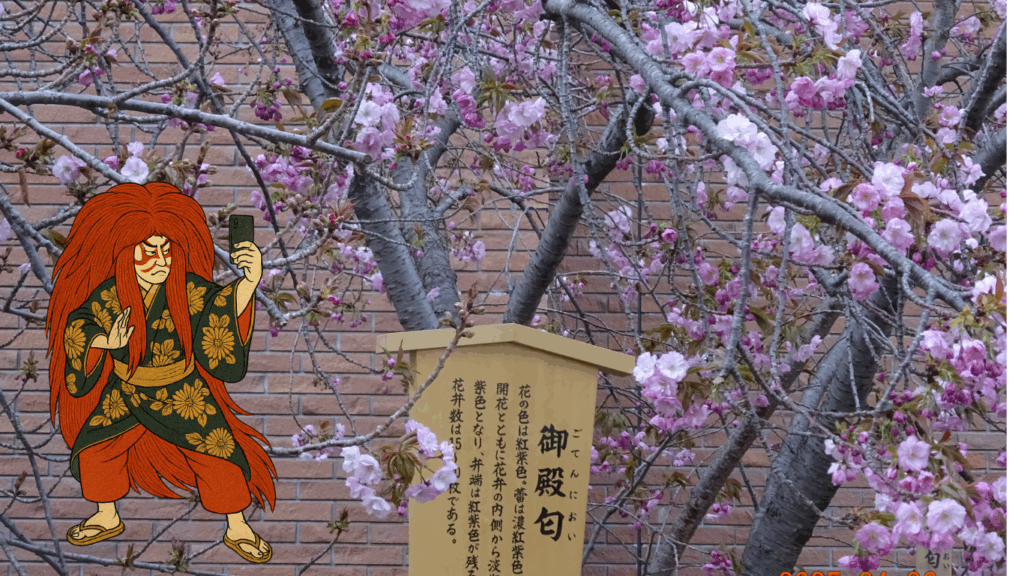
Drunk on Rare Blossoms: A Quiet Stream of Awe
At the Osaka Mint Bureau’s Sakura Tunnel, it’s not just the familiar Somei Yoshino that lines the path.
This year’s featured variety, Ranran, the newly cultivated Hiuchidani-kikuzakura, and rare blossoms like Nido-zakura and Yoro-zakura appear one after another—
delicate species not often seen elsewhere.
In total, there are 340 cherry trees spanning 142 different varieties.
Each tree bears a name tag, and with every step forward, there’s a new discovery waiting.
I found myself stopping again and again—to take photos, to gaze, to linger.
That gentle repetition gradually quieted my heart.
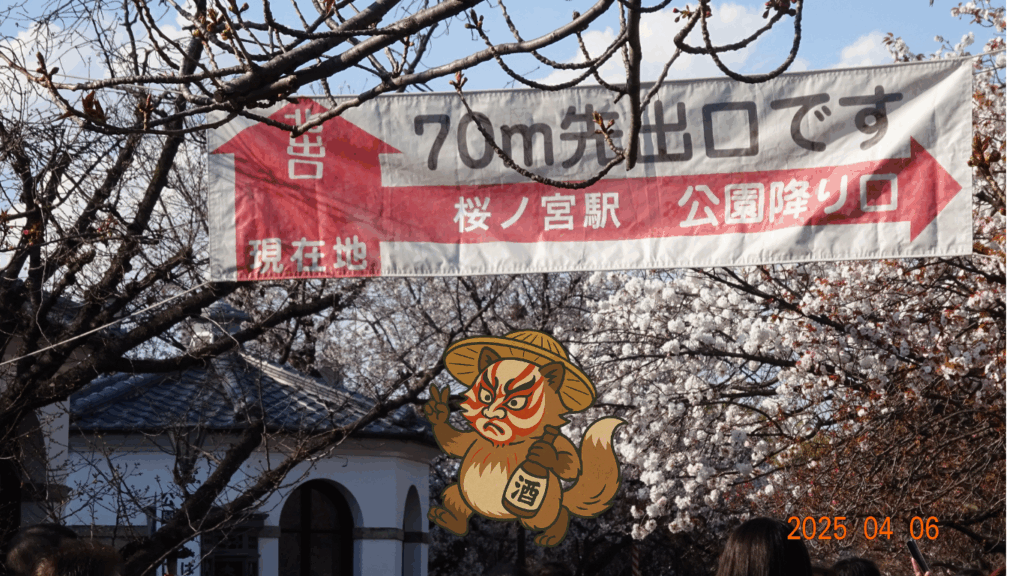
Beyond Two Springs: Heaven and Earth
As I passed through the final blossoms and reached the exit,
I turned back for just a moment.
Behind me stretched a path of cherry trees so beautiful, it made me want to walk it all over again.
Beyond that path, the world below awaited once more—food stalls, laughter, and tipsy voices.
People drunk on sake.
And me, still drunk on cherry blossoms.
Both springs are valid, neither one wrong.
But for me—
I know I’ll return next year,
drawn once more to the quiet of heaven.
📝 This article is part of the “Cultural Experiences” category.
Sharing seasonal beauty and traditional events in Japan through personal reflections.
🌸 Useful Tips for Next Year:
Osaka Mint Bureau – Cherry Blossom Tunnel
📅 Event Period:
Mid-April, one week only
(For reference: In 2025, it was held from April 5th to 11th.)
🖥️ Advance Reservation Required:
To reduce congestion, online booking is mandatory.
⏰ Recommended Time Slot:
Late afternoon to early evening (around 5:30–7:00 PM) tends to be less crowded.
🚪 Entrance and Exit Locations:
The route begins along the riverside (back entrance) and exits onto the main street.
It’s helpful to plan your return path in advance to avoid confusion.
🌸 A Final Note
Although this year’s blossoms have already fallen,
I hope you’ll visit next year—
with time to spare, and a quiet heart to walk through that heavenly tunnel of cherry blossoms.
And since the exit leads directly onto a busy main road,
it’s a good idea to consider your meeting point or return route beforehand.
A little preparation can make your springtime experience even more serene.

Today’s bonus capsule!
✨ Gateway to the Showa Era
The Showa era (1926–1989) was a time of great transformation in Japan. From postwar recovery to rapid economic growth, people’s daily lives and cityscapes changed dramatically over those six decades.
One of the most remarkable symbols of that era was the Shinkansen, the bullet train.
In 1964, just in time for the Tokyo Olympics, the Tokaido Shinkansen line opened. Nicknamed the “dream super-express,” it amazed the world by connecting Tokyo and Osaka in only four hours.
The Shinkansen was more than just transportation—it became a symbol of Japan’s recovery and technological innovation, a source of pride for the nation. As the network expanded across the country, it also gained recognition for its safety and punctuality, qualities that remain unmatched today.
For me, the Shinkansen is still an essential part of traveling.
Thanks to cards and smartphone apps, there is no need for paper tickets, and changing the time or seat is simple. When I happen to discover delicious local food along the way, I often postpone my departure just a little to enjoy it. With the Shinkansen, even such spontaneous adventures feel worry-free.
Looking back, the sight of the Shinkansen in the Showa era represents the moment when Japan began to race toward the future. Even now, in the Reiwa era, its speed and comfort continue to enrich my journeys.
